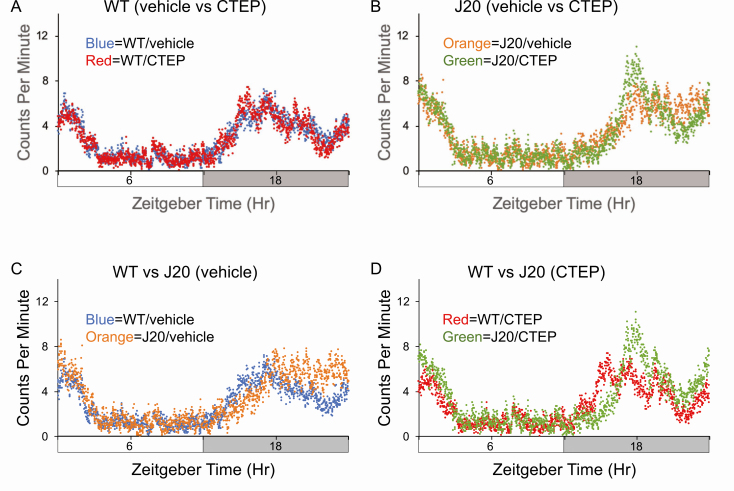Figure 3.
Diurnal activity levels in wild-type (WT) and J20 mice in response to CTEP (2-chloro-4-((2,5-dimethyl-1-(4-(trifluoromethoxy)phenyl)-1H-imidazol-4-yl)ethynyl)pyridine). Activity counts were assessed in 9-month-old WT and J20 mice after chronic treatment with vehicle or CTEP. Total activity counts (binned in 1 min increments) were averaged over 2–4 days of readings for cohorts and plotted on the y-axis versus a 24-h time period (in minutes). Time zero is “Lights On.” Cohorts consist of WT mice treated with vehicle (n = 14, blue), J20 treated with vehicle (n = 9, orange), WT treated with CTEP (n = 12, red), and J20 treated with CTEP (n = 12, green). (A) WT mice treated with vehicle (blue) versus CTEP (red). (B) J20 mice treated with vehicle (orange) versus CTEP (green). (C) Vehicle-treated WT (blue) versus J20 (orange). (D) CTEP-treated WT (red) versus J20 (green). Mice for these cohorts were tested in winter and spring.

